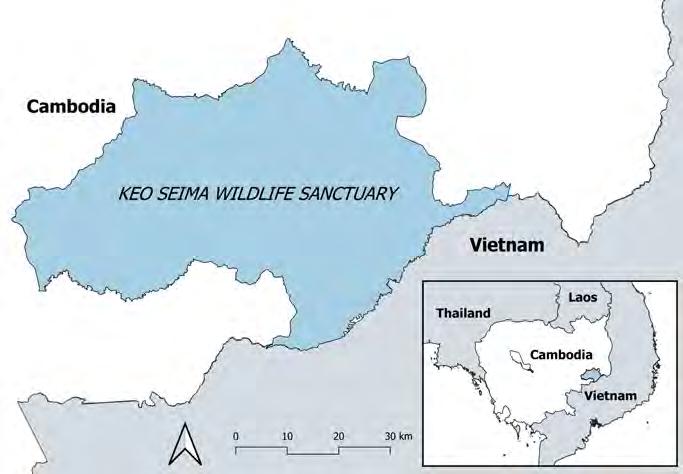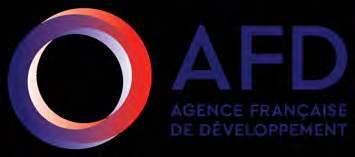WCS Cambodia











Nestled in the foothills of the Annamite Mountains, Keo Seima Wildlife Sanctuary is a stunning and ecologically significant landscape that has become a model for conservation in Cambodia. Established in 2002 by the Ministry of Agriculture, Forestry and Fisheries, this protected area covers 292,690 hectares and is managed by the Ministry of Environment with support from key partners.
Keo Seima Wildlife Sanctuary is a beautiful landscape and a crucial habitat for over 1,000 recorded species, including rare and endangered ones. The sanctuary is also home to many Indigenous Bunong communities who have relied on the forest for their livelihoods, culture, and spirituality for generations. In fact, a majority of all Bunong in Cambodia call Keo Seima Wildlife Sanctuary their home.
Through community engagement, sustainable development initiatives, and effective conservation strategies, the sanctuary has become a leading example of successful conservation efforts in the region. This booklet provides an overview of the biodiversity and ecological significance of Keo Seima Wildlife Sanctuary, its challenges, and the innovative strategies employed to ensure its protection. We invite you to learn more about the sanctuary's unique story and its role in promoting conservation efforts in Cambodia.



With over 1,000 recorded species, including 20 species new to science in the past decade, the sanctuary is home to the world's largest known populations of Black-shanked douc langur and Yellow-cheeked crested gibbons, and boasts the highest recorded bird diversity in Cambodia. These species are threatened by habitat loss, illegal hunting, and other factors, but robust monitoring and

1,032 species under protection
20 species new to science
85 threatened flora and fauna
Fostering a rich tapestry of over 1,000 species and Indigenous communities, Keo Seima Wildlife Sanctuary showcases the potential for sustainable coexistence.




The conservation of Keo Seima Wildlife Sanctuary is a collaborative and equitable effort that empowers the more than 20,000 people living in or adjacent to the sanctuary and ensures the protection of the ecosystem. Our initiatives focus on promoting sustainable livelihoods, preserving cultural values, and revitalizing traditional knowledge to protect the sanctuary's rich biodiversity long-term.
Community engagement is an essential strategy, with programs focused on sustainable livelihoods and alternative income generation that provide economic benefits while supporting conservation. Our conservation efforts prioritize equitable and inclusive management of the protected area, including securing Indigenous Community Titles (ICT) that grant legal land tenure rights for the Indigenous Bunong people and supporting the establishment of Community Protected Areas (CPA) for non-Indigenous communities.

20 communities
7 ICTs granted
4 CPAs established

Keo Seima Wildlife Sanctuary, striking a balance between human prosperity and ecosystem preservation, stands as a testament to the power of collaborative conservation.


Land clearance for cash crops and logging for timber pose a significant threat, leading to forest degradation and loss of habitats for wildlife. We are demarcating land, supporting community-led forest patrols, and sustainable agriculture initiatives. These efforts have reduced the incidence of illegal activities, protected habitats, and promoted sustainable forest use while increasing awareness of the importance of preserving natural habitats.

Unsustainable development poses a challenge to conserving natural resources and biodiversity, as it can lead to deforestation and habitat destruction. However, through our sustainable development initiatives, we have demonstrated that conservation and economic development can coexist. For example, our work promoting non-forest timber products and sustainable resource management has provided alternative income sources for KSWS communities while
Illegal hunting and wildlife trade pose significant threats to the sanctuary's biodiversity. To combat these issues, our International Wildlife Trafficking team works closely with our government partners to bolster enforcement efforts to target commercial trade and engage in community anti-poaching campaigns. Although our efforts have reduced illegal hunting activities, we recognize that changing mindsets and reducing dependence on wildlife
The effects of climate change, including drought and flooding, pose a significant challenge to local communities and biodiversity. As a vast storehouse of forest carbon, forests in KSWS are crucial to mitigating global impacts and protecting frontline communities. We prioritize efforts to protect the forest and monitor the effects of climate change, including hydrological and habitat changes, to ensure the continued

In Keo Seima Wildlife Sanctuary, we support ecotourism initiatives such as Jahoo Gibbon Camp and Elephant Valley Project, contributing to the conservation of a variety of species, notably Yellow-Cheeked Gibbons and Asian Elephants.
Collaborating with local Indigenous Bunong people, these projects build on their longstanding environmental stewardship. Job opportunities are created, honoring their cultural heritage.
Jahoo Gibbon Camp offers gibbon tracking at sunrise, hiking and bird watching. Elephant Valley Project lets visitors observe elephants roaming freely in their natural habitat. Both initiatives promote sustainable tourism practices.
Revenue generated by these ecotourism initiatives aids local communities and the overall sustainable development of the sanctuary, demonstrating how conservation and community well-being can coexist.




Looking to the future, Wildlife Conservation Society Cambodia remains committed to our core conservation and community engagement values. Our focus is on long-term sustainability, working in partnership with local communities and the Royal Government of Cambodia to ensure that conservation and economic development go hand in hand.
We are also committed to advancing our research efforts with ongoing monitoring and innovative assessment of the sanctuary's biodiversity and ecosystem health. This will help us understand the sanctuary's ecology better and inform our conservation strategies.
Through our work, we aim to set an example for sustainable conservation efforts that maximize ecological protection, sustainable economic development, and community wellbeing. We are dedicated to ensuring that Keo Seima Wildlife Sanctuary remains a model for conservation efforts in Cambodia and beyond.

25 years of species monitoring

357 species of birds 1/4 of Cambodia’s remaining elephants

We would like to express our gratitude to the many individuals and organizations who have contributed to the success of Keo Seima Wildlife Sanctuary's conservation efforts. We are particularly grateful to our valued partners, including local communities, the Cambodian Ministry of Environment, French Development Agency (AFD), U.S. Fish and Wildlife Service, Everland, and the French Facility for Global Environment (FFEM).
Together, we are working towards a shared vision of a sustainable and thriving future for the sanctuary and the people who call it home.







21 Street 21
Tonle Bassac, Chamkarmon Phnom Penh, Cambodia
+855 23 217 205
wcscambodia@wcs.org
cambodia.wcs.org


WCS Cambodia




 Photo Credits: © Filip Agoo and Everland
Photo Credits: © Filip Agoo and Everland